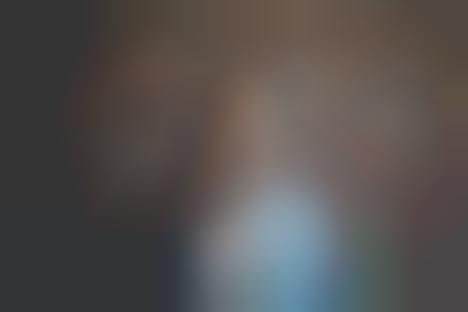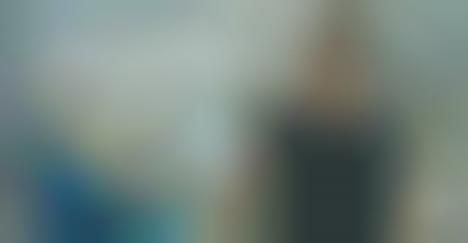Building an Innovation Pipeline
Jen Sagawa, VP of Innovation at Wilton
 Working in innovation is no piece of cake, as Jen Sagawa knows. As the VP of Innovation at Wilton, a company that focuses on bakeware as well as various crafts products, she's tasked with developing strategies for creating an efficient innovation pipeline for piping bags (not to mention the rest of Wilton's offerings.) She spoke with Trend Hunter about her successes and challenges in the field of innovation.
Working in innovation is no piece of cake, as Jen Sagawa knows. As the VP of Innovation at Wilton, a company that focuses on bakeware as well as various crafts products, she's tasked with developing strategies for creating an efficient innovation pipeline for piping bags (not to mention the rest of Wilton's offerings.) She spoke with Trend Hunter about her successes and challenges in the field of innovation.TH: Tell us about yourself.
JS: I started my career in the beauty industry, where I worked for 15 years doing product development. So that was interesting brand management and category management. I kind of burnt out in the beauty industry, so I had the opportunity to shift gears and go work in innovation consulting. I worked the last ten years in innovation consulting for a couple firms, where I focused on deeper qualitative in-home ethnographies, getting lateral experts to solve challenges — mining for deeper insights and finding innovation opportunities out of those. Beyond that, I worked with companies to both structure organizational teams around innovation and train on innovation.
The sectors I’ve worked in range from CPG pipeline work for companies like Unilever, Kimberly Clark, and Coke to doing long-term planning for companies like Citi Private Bank, and then also building structures for innovation for companies like Four Seasons Hotels, Regeneron Pharma, and others.
After working with Wilton and developing an innovation process, I was given the opportunity to come on and run the innovation team there. The team's only a few months old, but it’s great trying to figure out the front end of innovation as well as getting it to the commercialization process.
How do you and your team generate great ideas?
Actually, I find most companies are not for lack of ideas, but what they lack for are ideas that solve a consumer challenge. Oftentimes companies look for ideas for ideas’ sake, and they don’t think about it from the consumer’s perspective, they think about it from the company perspective. I used to say this in beauty: at the end of the day, a consumer may have five dollars — they could buy a lipstick or they could buy a cup of coffee from Starbucks. It’s not like they’re buying a lipstick from one brand or a lipstick from another brand; those five dollars have to be weighed against all the other ways that you could spend that five dollars. So if you don’t understand her life, then it’s really hard to create something that will make an impact with her.
The second thing about ideas is that it’s good to have a mix of internal and external stimuli to really help you get out of your typical river of thinking. It’s very easy to think, “We’ve tried this one before,” but it’s about cracking the challenge of approaching it differently. You need people to shake up how you think about those ideas. That doesn’t mean you have to hire an agency; you could just bring in great engineers or industrial designers or service people from across the world who have nothing to do with the category you’re in, but they can be helpful to spark thinking in new ways.
The third thing is implementation. I think a lot of companies do this very poorly: they have an idea, and by the time it gets to market it’s been modified so much that it no longer solves the challenge that it was put out to tackle. So having a strong commercialization expert who really understands the guardrails around what problem we’re solving for, what’s the most important thing about the idea, and how do I make sure this comes from our development map, I think that’s another component that makes for better ideas.
What are some barriers to innovation?
People get so mired in their own experiences that it’s very hard for them to see things differently. Companies get so fixated in thinking about either their retailers or their internal customers as their consumers; they don’t get close enough to the consumer to understand what the actual needs are. They think about what’s right for the company before they think about what’s right for the consumer.
I also find, personally, that being good at innovation does not mean you’re just a quirky, creative person. It means that you can juggle a lot of things from strategy to execution to creativity to business sense. You have to do all of those things.
How do you identify trends? What resources do you and your team use to spot trends and insights?
“Trends” is actually a very complex and often misused term, because there are macro-trends that are more about lifestyle, like what my home will look like in the future and how I’m going to interact with it. Then there are trends as in, you know, this year ‘teamwork’ is the hot term. So to me, it’s a matter of not just lumping them into one basket but understanding what trends are important in the short term and how do you structure around that?
There are trends that can be adjacent to what you do. For me in the baking world, there are trends on kitchen appliances that I need to stay on top of that will impact the kinds of bakeware in the future, there are trends on how people like to be educated or learn new skills, and so I need to stay on top of that because I want to make sure our products are able to be integrated easily and people can learn how to develop a skill around baking.
Do you have specific rituals for resetting to be creative?
To me it’s about immersing myself when I get a new project, getting out of what I had been doing. Whereas I was just in the process of turning over products to commercialization, I’ve now immersed myself into really exploratory work to get my mindset onto new categories and consumers. You have to purposefully do that and not think of it as “I’m done the next one, let’s just turn the page and keep going.”
Has there ever been an instance where another industry has influenced an innovation of yours?
Absolutely. Working with GoodNites bedwetting, we used inspiration from a Post-it pad. We had to create solutions for kids in the middle of the night that they could do easily by themselves and so that they wouldn’t be moving around the bed. So think about pads for wetting the bed and having them stuck one on top of the other, you could pull one off much like a Post-it. So that’s just one example of where you can use one inspiration in a completely different space.
What are some examples of things you can do to create a culture of innovation?
It has to start with the CEO; they have to make it a priority. The innovation function has to be tied to the strategy of the company. That’s really important, to understand the role of innovation, put the right priorities around it, and accept it right at the top.
I also think there needs to be clear objectives and goals that are set for an organization, so that everyone in the line in all the other departments that an innovation function tends to work with is clear about what the role of the innovation team is.
And then the third thing is to be comfortable in a bit of a grey space for some time. Innovation does take time. There are things that are low hanging fruit that you can get out the door quickly, but to actually have more breakthrough stuff you need time, focus, and the right resources to do that.
The other thing is that you have to empower a culture of smart risk-taking and experiment-making. Not everything’s going to work, and people have to feel comfortable to try something. Not willy nilly, but certainly be willing to take it farther than you might normally.
What’s the craziest thing you have done to get creative inspiration?
I’m a people person; I love talking to consumers and digging into new things. Talking to some of the most extreme, strange people in a category can be really useful. So, for example, I did a project a few years ago on stomach problems for antacid, so I spoke to doctors, but then I spoke to a competitive eater, because they get incredible amounts of stomach issues. It’s a very extreme person to talk to, and you learn really fascinating things when you talk to people who are, as I like to call them, the weird and wonderful. It helps you to see your challenge in a brand new light, which is really fun, and then you can use those people as inspiration for thinking differently.
Featured Articles

Adventuring for the Brand
Tasha Sheridan, Strategy Consultant at 1HQ

Creating a Culture of Security
Marsh Middleton, Business Director at Responsive Digital Inc.

Managing Creative Chaos
Emily Beckmann, Concept Creative & Communications Manager at Merlin

Sustainably Innovating
Brianna Kilcullen, Social Responsibility & Traceability Manager at prAna

Speeding Up Innovation
Pauline Decroos, Senior Consumer Insights Manager at Bel Brands

Community-Minded Innovation
Dana Celona, Concept Development Specialist at Wawa, Inc.

Collaboration and Curiosity
Johanna Moscoso, Consumer Insights Lead at The Weather Company

Prioritizing Innovation
Carolina Otero, Consumer Insights Manager at PepsiCo

Breaking Biases with Diversity
Craig Tiley, CEO at Tennis Australia